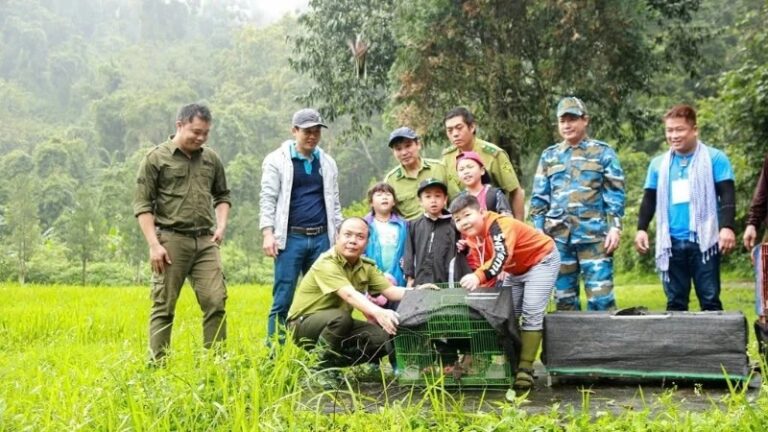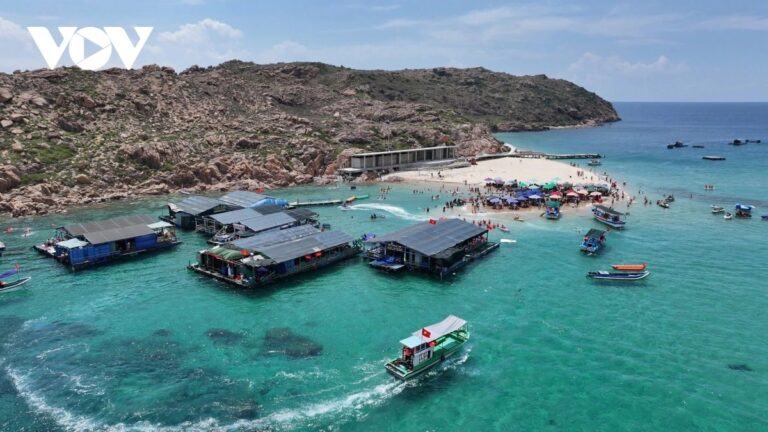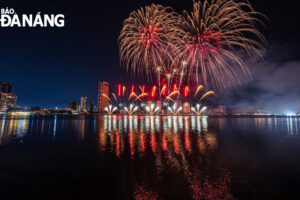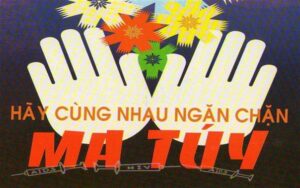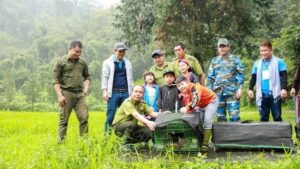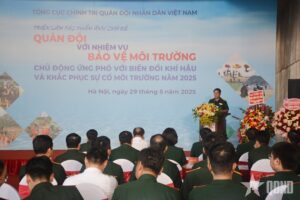Sacred to Vietnam’s millions of Buddhists, Yen Tu Mountain in Quang Ninh Province boasts breathtaking scenery along with hundreds of temples, other man-made structures, and religious objects.
A Vietnamese saying warns that “Though you practice charity and do good deeds for a hundred years, you will not achieve perfect enlightenment if you have not been to Yen Tu.”
The majestic scenery and the tranquility of its temples inspired King Tran Nhan Tong, who reigned from 1279 to 1293, to pass the throne to his son and lead the life of a Buddhist monk at Yen Tu.
There, he founded the first Vietnamese School of Zen Buddhism: Truc Lam.
The sect soon attracted thousands of followers so Tran Nhan Tong ordered the construction of hundreds of buildings and other structures on Yen Tu Mountain.His successor, Phap Loa Dong Kien Cuong (1284-1330) maintained the pace of construction and Yen Tu remained the country’s leading Buddhist center through the Le and Nguyen dynasties.
Religious devotion
At an altitude of 1,068 meters, the summit of Yen Tu Mountain is covered by clouds most of the time.
Until early last year, religious devotees and adventurous tourists had to trek through six kilometers of dense bamboo and pine to reach the top. Now there’s a cable car.
The ease of the high-wire trip to the summit goes down poorly with Minh Ha from Hai Phong, who reckons a true Buddhist should ascend the peak on foot so as to show sincerity and be suitably rewarded.
“Many people claim that it’s difficult to reach the peak of Yen Tu Mountain by foot, yet hundreds of elderly people manage it,” says Ha pointedly.
Nguyet, 58, heartily endorses the idea of trekking to the summit. “I have never felt so alive and excited as when I climbed to the top one step at a time,” she exclaims in delight.
Rock at Heaven’s Gate
The best-known feature of Yen Tu Mountain is the rocky outcrop called An Ky Sinh, which stands two meters tall on the summit and is aptly known as Heaven’s Gate.
It is named after the legendary Chinese Taoist An Ky Sinh, who dwelt on the summit of Yen Tu thousands of years ago and turned to stone after achieving enlightenment, or so the story goes.
Some of the thousands of pilgrims who flock to Yen Tu every year, especially for the spring festival, rub money on the rock in the belief that it will bring financial prosperity and help them run their business better.
It’s one of several important rocks on the mountain. Another juts out over a small and often crowded temple in the grounds of Hoa Yen-Mot Mai-Dong Pagoda down below.
Temple on the mount
Situated at 1,000 meters above sea level near the rock of An Ky Sinh, Dong (copper) Pagoda is usually cloaked in mist and cloud cover, but when it clears the whole panorama of Vietnam’s northeast is laid out in detail.
From a short distance away, the pagoda resembles a golden lotus. It was recently rebuilt at a cost of more than VND21billion (US$1.23 million).
The entire structure with more than 3,500 statues, bells and such weighs some 70 tons, so building the temple and fitting it was quite a feat.
Back to earth
The access road is named Vang Danh and starts in Thuong Yen Cong Commune, Uong Bi District 125 kilometers from Hanoi and 50 kilometers from Ha Long by the famous bay of the same name.


